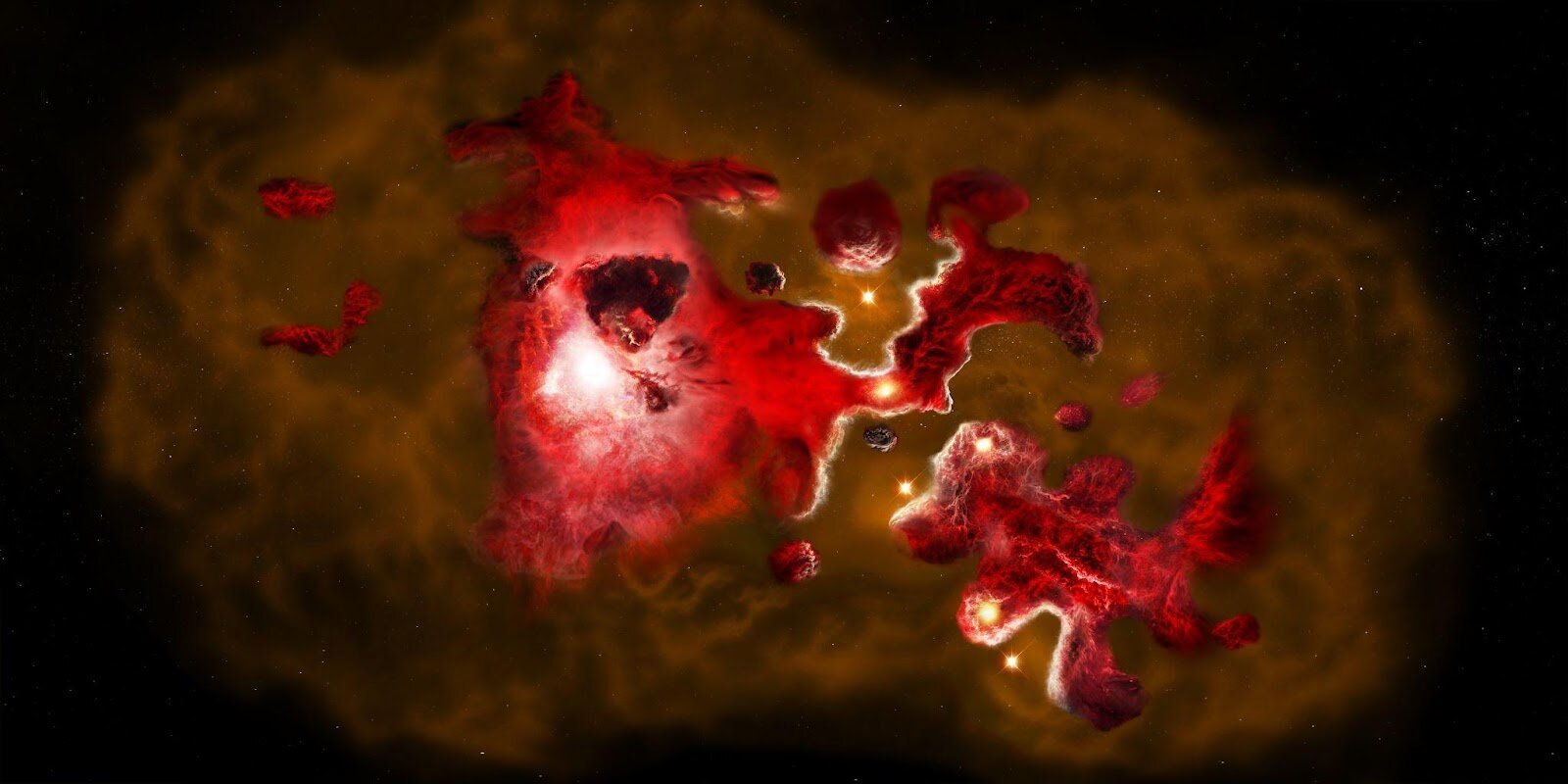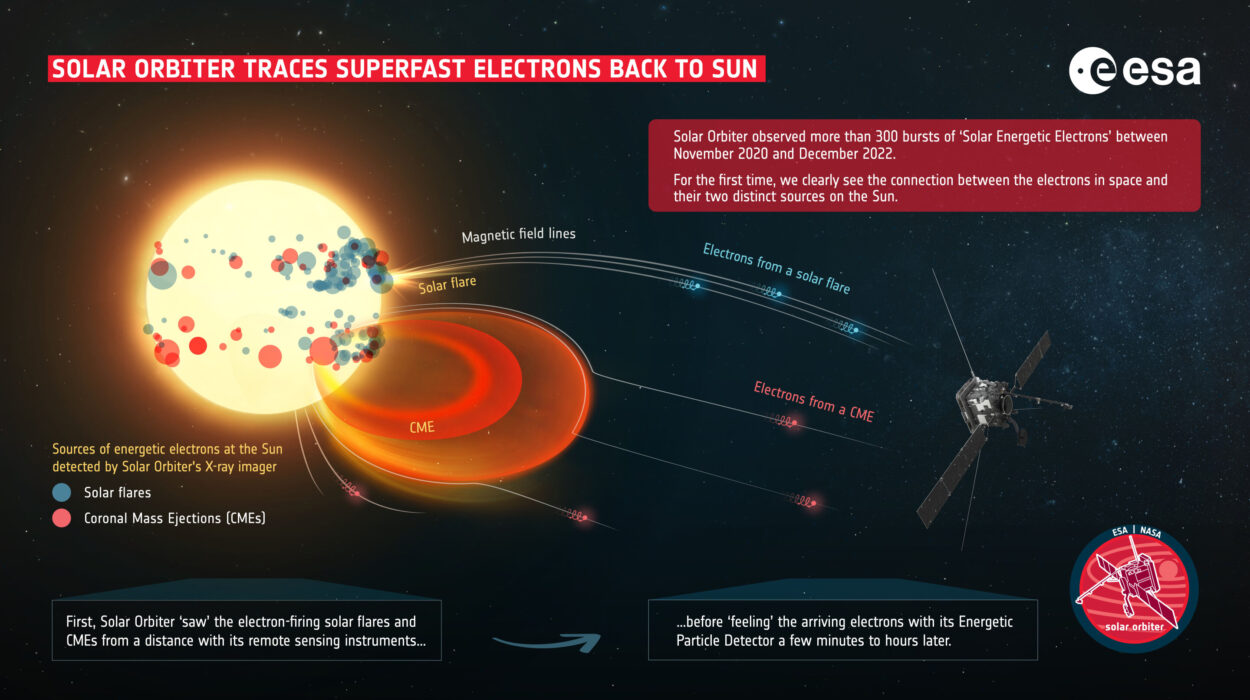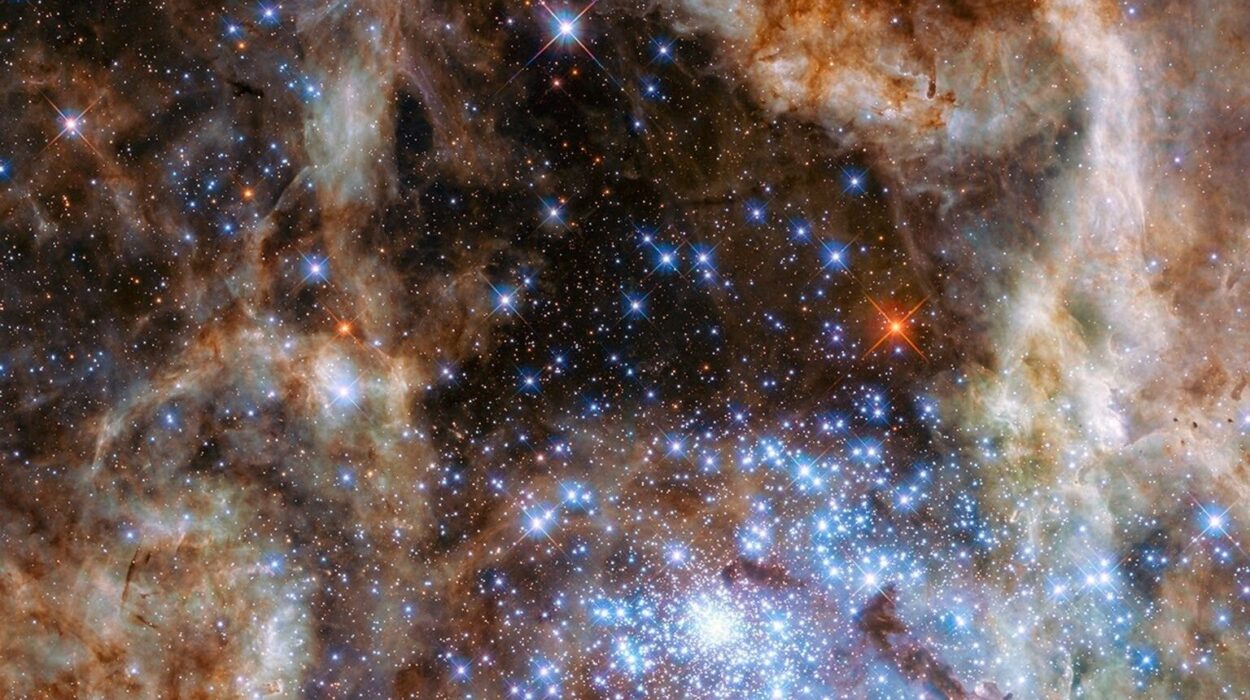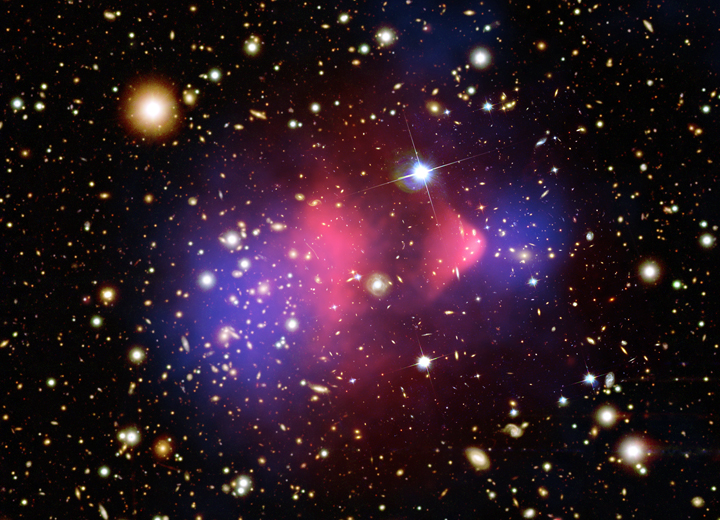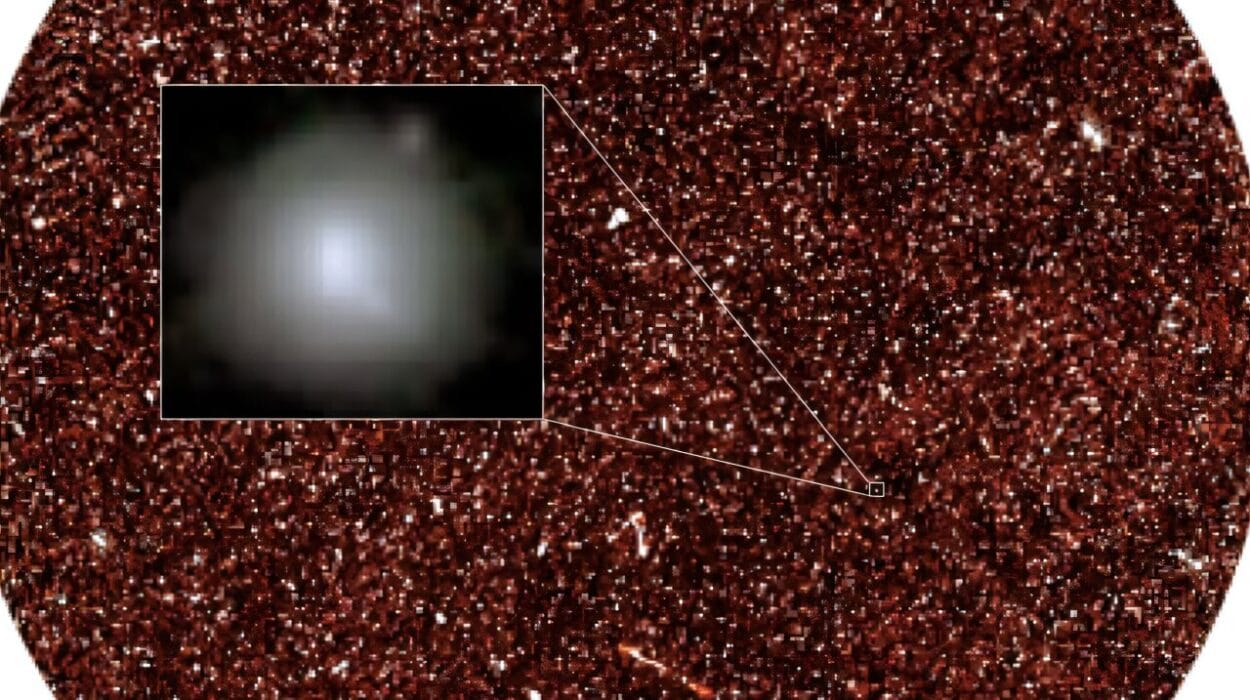Long before Earth formed, before our Sun began to burn, before the Milky Way spiraled into its elegant dance, galaxies were already taking shape. Now, for the first time, astronomers have peered into that ancient past with clarity and detail never before imagined—illuminating the invisible blueprints of galaxies just one billion years after the Big Bang.
Using the unparalleled capabilities of the Atacama Large Millimeter/submillimeter Array (ALMA) in northern Chile, an international team of astronomers has launched the CRISTAL survey—short for [CII] Resolved ISM in STar-forming galaxies with ALMA—a cosmic investigation into how the first galaxies formed their stars, their disks, and their destinies.
This ambitious survey, recently published in Astronomy & Astrophysics, doesn’t just observe galaxies as distant specks of light—it dissects them. Layer by layer. Cloud by cloud. Star by star.
Cold Dust, Hot Questions
“Thanks to ALMA’s unique sensitivity and resolution, we can resolve the internal structure of these early galaxies in ways never possible before,” said Dr. Rodrigo Herrera-Camus, principal investigator of CRISTAL and professor at the Universidad de Concepción in Chile. “We’re seeing the formative scaffolding of galaxies—how stars are born in enormous clumps and how rotating disks begin to emerge.”
To unravel these cosmic puzzles, CRISTAL focused on 39 galaxies selected to represent typical star-forming systems in the early universe. Each galaxy was observed as it appeared more than 12 billion years ago—when the universe was in its cosmic infancy.
By detecting a specific fingerprint of light called [CII] emission—produced by ionized carbon atoms in cold interstellar gas—astronomers could map the very material out of which stars and galaxies are built. This light, invisible to human eyes, is captured by ALMA’s ultra-sensitive receivers, revealing vast clouds of gas and dust that cradle newborn stars.
Paired with breathtaking images from the Hubble and James Webb Space Telescopes, the CRISTAL team produced the most detailed view yet of the cold, chaotic ecosystems within early galaxies.
Galaxies in Clumps, Spiraling into Order
The findings are both stunning and illuminating. Many of these primordial galaxies appear to form stars in gigantic clumps, each several thousand light-years wide—cosmic nurseries where gravity, gas, and time give birth to light.
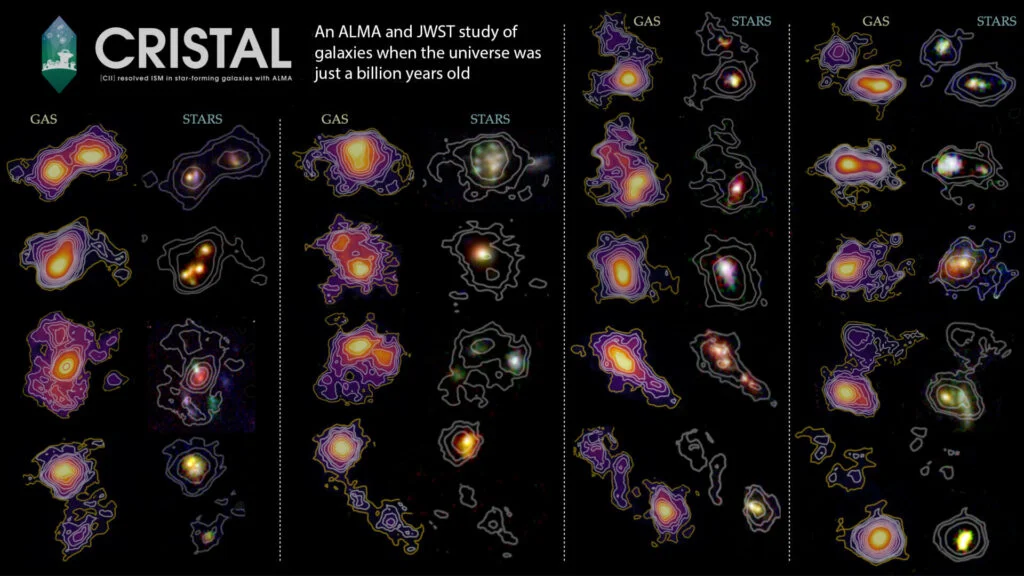
Some galaxies even show signs of rotation, hinting at the early emergence of disk-like structures—the ancestors of the graceful spiral galaxies that now populate the modern cosmos.
But perhaps most surprising was what the team couldn’t see—at least, not in the usual sense.
“The [CII] emission often extended far beyond the visible stars,” said Loreto Barcos-Muñoz, a co-author and astronomer at the National Radio Astronomy Observatory. “That tells us there’s a vast reservoir of cold gas surrounding these galaxies—fuel for future star formation, or possibly material being ejected by stellar winds.”
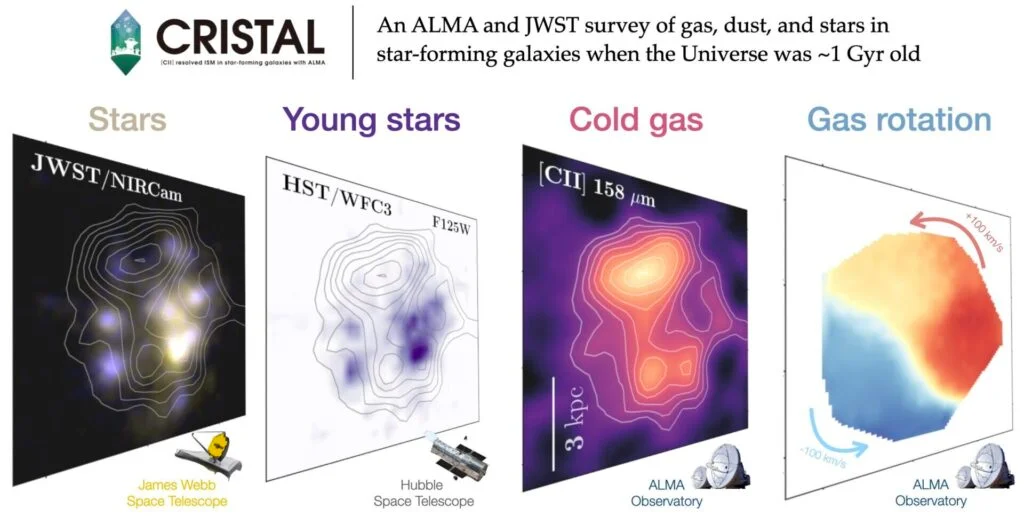
It’s a revelation that adds depth to our understanding of galactic growth. These galaxies weren’t neatly organized; they were turbulent, clumpy, and evolving rapidly. And yet, inside that chaos lay the seeds of structure.
Two Galaxies, Two Cosmic Mysteries
While each galaxy told its own story, two stood out like cosmic enigmas.
CRISTAL-13, a dusty giant, holds so much cosmic dust that visible and infrared light can barely escape. But ALMA’s millimeter wavelengths cut through the darkness, revealing hidden stars that would otherwise remain invisible. It’s like having night vision for the early universe.
CRISTAL-10, on the other hand, defies expectations. Despite its glowing infrared output, it shows surprisingly faint [CII] emission—an unusual combination previously observed only in rare, ultra-obscured galaxies like Arp 220, one of the most luminous galaxies in our nearby universe. The dim signal may point to extreme conditions, dense dust clouds, or even energetic phenomena like supernova-driven winds or hidden black holes.
“These galaxies are not just static relics of the past,” Barcos-Muñoz emphasized. “They are dynamic, evolving systems with complex internal structures. CRISTAL lets us peel back the layers and witness that evolution in action.”
A Time Machine for Galactic Origins
ALMA sits high in the Chilean Andes, where dry air and high altitude allow it to observe the faintest whispers from the universe’s earliest epochs. With CRISTAL, ALMA acts not just as a telescope, but as a time machine—reaching back across more than 12 billion years to study galaxies as they were when the cosmos was young.
“This is the kind of science ALMA was built for,” said Dr. Sergio Martín, Head of Science Operations at ALMA. “CRISTAL showcases the power of our large programs to answer fundamental questions about how the universe evolved. We’re not just collecting data—we’re rewriting cosmic history.”
And it’s not just history for history’s sake. By comparing cold gas maps with visible stars and dust, astronomers can trace how galaxies transition from unruly, starbursting systems to the majestic spirals and ellipticals we see in today’s sky—including our own Milky Way.
A Blueprint for the Future
CRISTAL doesn’t just deliver answers. It offers a framework for what comes next.
“This survey gives us the kind of multi-wavelength data that allows us to test and refine our theories of galaxy evolution,” said Herrera-Camus. “We now have a way to study the interstellar medium in detail at a time when galaxies were still assembling themselves. That’s incredibly powerful.”
The insights from CRISTAL will guide future surveys, inspire simulations, and help astronomers predict how galaxies grow, interact, and recycle their gas. It’s a new era of high-resolution, multi-dimensional astronomy—one where the universe isn’t a distant mystery, but a readable story.
And in that story, even the most ancient galaxies aren’t just snapshots in time. They’re living ecosystems—messy, magnificent, and full of promise.
Reference: R. Herrera-Camus et al, The ALMA-CRISTAL survey: Gas, dust, and stars in star-forming galaxies when the Universe was ∼1 Gyr old, Astronomy & Astrophysics (2025). DOI: 10.1051/0004-6361/202553896
